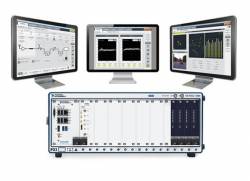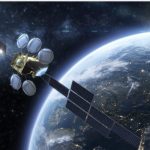A: Receiver Autonomous Integrity Monitoring (RAIM) and Advanced RAIM (ARAIM; known more generally as Solution Separation RAIM, or SS-RAIM) were originally designed to detect, alert and (where possible) exclude faulty measurements caused by Signal-in-Space (SIS) failures.
These include satellite clock and ephemeris faults and atmospheric (ionospheric and tropospheric) anomalies. Civil aviation has used RAIM for this purpose for many years in Area Navigation (RNAV) and Required Navigation Performance (RNP) operations. ARAIM improves upon the performance and availability of RAIM and will (in a few years) make it possible to conduct instrument approaches with vertical navigation without the need to receive corrections and integrity information from augmentation systems.

Table 1 shows the integrity performance commitments that GNSS service providers have made to civil aviation via the International Civil Aviation Organization (ICAO) [1]. These are used as inputs in the ARAIM user algorithm [2] and identify the additional protection ARAIM must provide to achieve the integrity risk of 10-7 per operation or below for operations with failure consequences deemed “Hazardous,” as is the case for precision approach under restricted-visibility conditions. For example, GPS commits to a fault rate (Rsat) no greater than 10-5 per satellite per hour for faults affecting individual satellites that are not correlated across multiple satellites. ARAIM (or any other integrity subsystem) must reduce this probability to a small fraction of the integrity risk requirement by detecting and excluding such faults or alerting that use of GNSS is no longer safe within the 6-second time to alert (TTA) for CAT I precision approaches.
Adding RAIM and ARAIM to Integrity Monitoring
GNSS applications with the most demanding accuracy and integrity requirements normally employ augmentation systems such as Satellite-based and Ground-based Augmentation Systems (SBAS and GBAS, respectively). The corrections generated by these systems reduce user measurement errors, provide bounds on these errors, and indicate which measurements should not be used based on ground-system monitoring with multiple static reference receivers. This has the effect of reducing the
probabilities of undetected faults on satellites and other SIS anomalies to below 10-7 per hour. As a result, users with access to either SBAS or GBAS corrections are likely to use them to simplify user integrity monitoring. For example, airborne users applying the SBAS or GBAS Minimum Operational Performance Requirements (MOPS) are encouraged to use RAIM when it is available, they are not required to, nor are they limited by the higher protection levels (PLs) generated by RAIM due to its need for redundant satellite measurements.
This raises the question: Is RAIM or (particularly) ARAIM a useful addition to integrity monitoring for users who make use of augmentation system integrity monitoring? The answer depends on the operational environment of each user. For aircraft in flight with an excellent view of the sky and far from reflecting surfaces other than those of the aircraft itself, the probability of large errors generated at the aircraft itself due to multipath or radio frequency interference (RFI) is very low. However, for automobile, train, ship and unmanned aerial vehicles (UAVs) that are much closer to obstacles and reflecting surfaces (including the ground and the sea surface) and potential RFI or spoofing transmitters, local threats may be more likely than SIS failures that can be mitigated by augmentation systems. Under these conditions, ARAIM may be a necessary addition to external SIS monitoring.
Consider the use of augmented GNSS on a vehicle being driven autonomously and relying on GNSS and other sensors to stay within a lane of traffic. In rural areas, multipath errors will be relatively benign (albeit worse than on an aircraft), but as the vehicle approaches urban areas and especially “urban canyons,” very large multipath errors may occur due to the GNSS receiver tracking a reflected signal instead of the one directly from a satellite. ARAIM would thus be useful (and perhaps necessary) to exclude or at least detect such large errors on one or multiple satellites.
Working with ARAIM
ARAIM has a major advantage over traditional RAIM in that it can directly represent and monitor faults on multiple satellites. In ARAIM, each hypothesized fault on one or more measurements is represented by its own fault hypothesis, and every one of these hypotheses is checked by comparing the all-in-view position solution to the solution that would apply if the measurement(s) in that hypothesis were faulted. If this difference between these solutions is large compared to nominal conditions, the fault hypothesis in question is likely to be true, and ARAIM would then proceed to try to isolate the fault to that specific hypothesis or, failing that, alert the user that safe operations are no longer feasible.
However, if the probability of individual measurement faults is much larger than what is typical for SIS faults in Table 1, the number of multiple-measurement fault hypotheses will grow quickly and may exceed the ability of the user’s processor to update ARAIM every time new measurements are obtained. For example, if 16 satellites are in view from two constellations (e.g., GPS and Galileo), and each satellite has an independent probability of excessive multipath of 0.001, the probability of excessive multipath on any pair of satellites is (0.001)2=10-6, which is small but not negligible (and would be larger when multipath errors correlated among nearby satellites are included). Therefore, each of the 16-choose-2=120 independent satellite pairs must be monitored by ARAIM, creating a total of 16+120=136 hypotheses to be checked and updated every epoch (e.g., every second).
For users with powerful processors, ARAIM calculations with hundreds of fault hypotheses may be workable, but this is not the case for most off-the-shelf automotive and maritime user equipment today. The best alternative is to combine the various multiple-fault hypotheses into groups so the number of hypotheses that must be checked every epoch is limited to what the user’s processor can handle. One way of doing this is to group satellites in similar locations in the sky into single hypotheses [3]. Returning to the example above, if the 16 satellites in view can be grouped into four sets of four nearby satellites each, only four fault hypotheses would remain to be monitored. The disadvantage of this approach is resolution of faults in individual satellites is reduced, leading to significantly larger protection levels.
Conclusion
ARAIM is an important addition to integrity monitoring for augmented users when local faults from multipath or RFI are more likely to occur than the SIS faults mitigated by augmentation systems. When the number of satellites in view is large, hundreds of individual fault hypotheses may need to be monitored, but this number can be reduced by grouping individual measurements at the cost of losing fault resolution and therefore suffering higher protection levels. This is a key tradeoff to investigate when designing and procuring cost-effective user receiver and processor hardware.
References
[1] ICAO SARPS, Annex 10, Vol. I, Radio Navigation Aids, 8th Edition, July 2023.
[2] J. Blanch, T. Walter, et al., “Baseline Advanced RAIM User Algorithm: Proposed Updates,” Proceedings of ION ITM 2022, Long Beach, CA, January 2022.
[3] J. Blanch, T. Walter, et al., “Fixed Subset Selection to Reduce Advanced RAIM Complexity,” Proceedings of ION ITM 2018, Reston, VA, January 2018.






